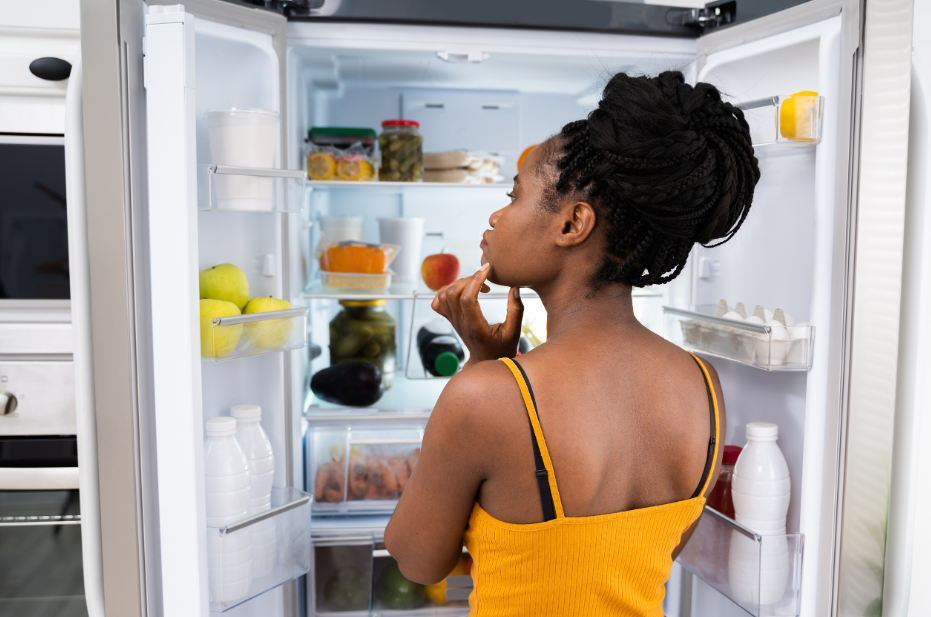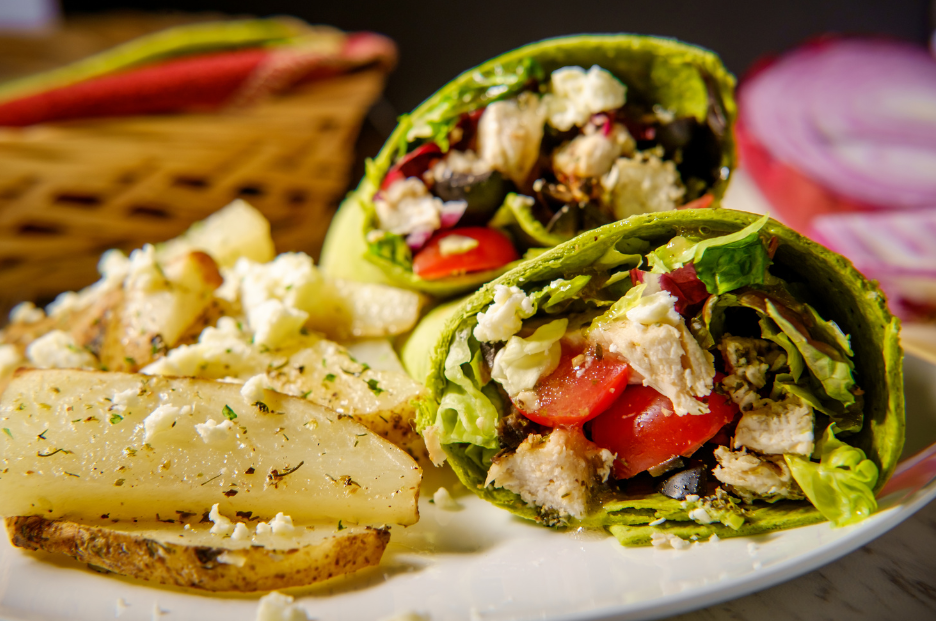How to Get Creative with Leftovers: Turn Extra Food Into Healthy, Flavorful Meals
“Sometimes the biggest barrier to using leftovers creatively is the internal pressure to do it perfectly. But friend, feeding your body well doesn’t have to mean Pinterest-worthy meals every day.”
If you’ve ever opened the fridge to a half-empty container of roasted veggies, a random scoop of quinoa, or one lonely grilled chicken breast—and thought, “What on earth am I supposed to do with this?”—you’re not alone.
Many women trying to feed their families well (while honoring their health, budgets, and time) find themselves stuck in the leftover loop. You don’t want to waste food, but you also don’t want to eat the same exact meal for the fourth time in a row.
The good news? With a little creativity, those leftovers can become the building blocks of something entirely new, delicious, and nourishing. In this post, I’ll show you how to turn yesterday’s dinner into today’s exciting (and healthy!) lunch, dinner—or even breakfast.
Let’s dig in.
Why Leftovers Are a Powerful Health & Stewardship Tool
Getting creative with leftovers isn’t just about cleaning out the fridge (although that’s a nice bonus). It's also about:
✅ Saving money by reducing food waste [1]
✅ Saving time by cutting down on cooking prep [2]
✅ Honoring your body with balanced, home-cooked meals [3]
✅ Living more intentionally by stewarding what God has already given you [4]
When you stop seeing leftovers as “less than” and start seeing them as building blocks, a whole new world of mealtime possibilities opens up. You don't need to be a professional chef to make nourishing meals from scraps—you just need a few foundational tools, a willingness to experiment, and a heart for stewardship.
"I'm too busy to reinvent meals."
Solution: Start with a flexible meal prep mindset.
You don’t have to reinvent the wheel every night. The key is to plan meals that can be easily reworked. Think:
A big batch of grilled chicken → tacos, salads, soups, or wraps
Roasted veggies → breakfast hash, grain bowls, quesadillas
Brown rice or quinoa → stir-fries, burrito bowls, or stuffing for peppers
If you know your schedule is going to be hectic, plan meals intentionally that can morph into something new with very little extra work. For example, cook an extra sheet pan of veggies or double your protein so you have building blocks to work with later in the week [5].
Meal prepping doesn’t have to mean cooking entire meals ahead of time. It can simply mean preparing ingredients that make future meals easier and faster to assemble. Even chopping extra onions or cooking a few extra servings of brown rice goes a long way.
"Leftovers are boring."
Solution: Use flavor layering and global inspiration.
Don’t underestimate the power of spices, sauces, and textures. You can make yesterday’s meal feel brand new with a few flavorful touches:
Toss leftover protein in buffalo sauce and serve over greens for a spicy salad
Turn roasted sweet potatoes into a taco filling with black beans, cumin, and lime crema
Use leftover rice to make veggie fried rice with sesame oil, coconut aminos, and a fried egg on top
If you’re tired of eating the same flavors, experiment with global cuisines—Mexican, Mediterranean, Asian-inspired, or Italian herbs can completely change a dish.
Leftovers don’t need to feel like a repeat—they can feel like a remix. Keep a few sauces and garnishes on hand—like tahini dressing, chimichurri, or Greek yogurt—to add new layers of flavor. Even a squeeze of lemon juice or a fresh herb can totally transform a plate [6].
"I never know what goes with what."
Solution: Build a “Leftover Remix” formula you can trust.
Here’s a simple formula I share with clients—it works nearly every time:
1. Base (grain, greens, or veggies)
Quinoa, brown rice, spinach, zoodles, cauliflower rice, roasted veggies
2. Protein (leftover meat, beans, eggs, etc.)
Shredded chicken, lentils, steak, turkey burgers, chickpeas
3. Sauce or seasoning
Pesto, vinaigrette, tahini, salsa, Greek yogurt-based dressing
4. Crunch or texture
Pumpkin seeds, chopped nuts, raw veggies, roasted chickpeas
Using this formula, you can build bowls, wraps, salads, and warm grain dishes from whatever you have on hand—no recipe required!
If you're not sure whether something will "go together," remember: taste buds adapt quickly. A lot of great meals were discovered by experimentation! Keep trying different combinations until you find a few go-to formulas your family enjoys. And don’t be afraid to ask yourself, “What would make this more satisfying or exciting?” That little question can lead to big mealtime breakthroughs.
Simple Leftover Remix Ideas to Try
Here are a few creative ways to repurpose common leftovers:
Grilled Chicken → Greek Salad Wraps
Dice it up and wrap it in a whole grain tortilla with cucumber, tomato, olives, feta, and a drizzle of tzatziki.
Roasted Veggies → Breakfast Hash
Sauté with eggs and spinach for a satisfying, savory breakfast.
Leftover Chili → Stuffed Sweet Potatoes
Scoop chili into baked sweet potatoes, top with avocado and a dollop of plain Greek yogurt.
Brown Rice → Stir-Fry
Heat in a skillet with frozen veggies, scrambled egg, and soy sauce or coconut aminos.
Taco Night Leftovers → Breakfast Tacos
Wrap scrambled eggs, leftover beans or meat, and salsa in a corn tortilla. Add fresh herbs or avocado.
Leftover Fish → Savory Fish Cakes
Mix with mashed sweet potatoes, an egg, and seasonings, then pan-fry until golden.
Leftover Lentils → Soup Starter
Simmer lentils with diced tomatoes, broth, and Italian herbs for a hearty and fast lunch.
These small shifts can breathe new life into your meals while keeping things healthy and stress-free.
A Note on Mindset: Stop Striving for Perfection
Sometimes the biggest barrier to using leftovers creatively is the internal pressure to do it perfectly. But friend, feeding your body well doesn’t have to mean Pinterest-worthy meals every day.
Simple, nourishing, and real is enough.
In fact, Jesus modeled this when He fed the 5,000—with leftovers! After the miracle, the disciples gathered up the extra food, and nothing was wasted:
"When they had all had enough to eat, he said to his disciples, 'Gather the pieces that are left over. Let nothing be wasted.'" — John 6:12 (NIV)
What a beautiful reminder that even the small scraps of our lives matter—and that God can use the humble leftovers to provide, nourish, and bless. The same is true in your kitchen.
Want More Tips Like This? Join My Private Facebook Group!
If you’re ready to ditch the mealtime stress and start using what you have to create healthier meals with ease, I’d love to invite you to join my private community: the Red Flower Healthy Living Group.
Inside, you'll get:
✅ Meal prepping tips & healthy recipes
✅ Encouragement for living a balanced, faith-fueled life
✅ Accountability and support from like-minded women
✅ Free resources, challenges, and giveaways
Come be part of a health-focused sisterhood where progress matters more than perfection. Click here to join the group.
Supporting you in your meal prep struggles,
Coach Tiffany
Subscribe
Want to get my latest blog posts, helpful health tips, and free resources delivered straight to your inbox?
Sign up for my email list and be encouraged in your journey toward better physical, mental, and spiritual health—one small step at a time!
P.S. If you’re feeling ready to take a more personal step toward your health goals, I’d love to talk with you. Book your free 30-minute call here.
Footnotes
[1] “Consumers” U.S. Department of Agriculture, 19 May 2025, https://www.usda.gov/about-food/food-safety/food-loss-and-waste/consumers.
[2] Hanley, Kate. “The Joy of Leftovers – Reduce Food Waste.” Kate Hanley, 19 May 2025, https://katehanley.com/the-joy-leftovers-reduce-food-waste/.
[3] Klein, Laura, and Kimberly Parks. “Home Meal Preparation: A Powerful Medical Intervention.” American Journal of Lifestyle Medicine, vol. 14, no. 3, 2020, pp. 282–285.
[4] Faust, David. “What About the Leftovers?–John 6.” The Lookout, 19 May 2025, https://lookoutmag.com/2013/what-about-the-leftovers-john-6/.
[5] Adair, Meghan, and Carrie Durward. “Food Waste Prevention Part 4: Using Leftovers.” Utah State University Extension, 19 May 2025, https://extension.usu.edu/nutrition/research/food-waste-part-4.
[6] “Revamping Your Leftovers using Spices.” Spice Station, 19 May 2025, https://spicestationsilverlake.com/revamping-your-leftovers-using-spices/.









